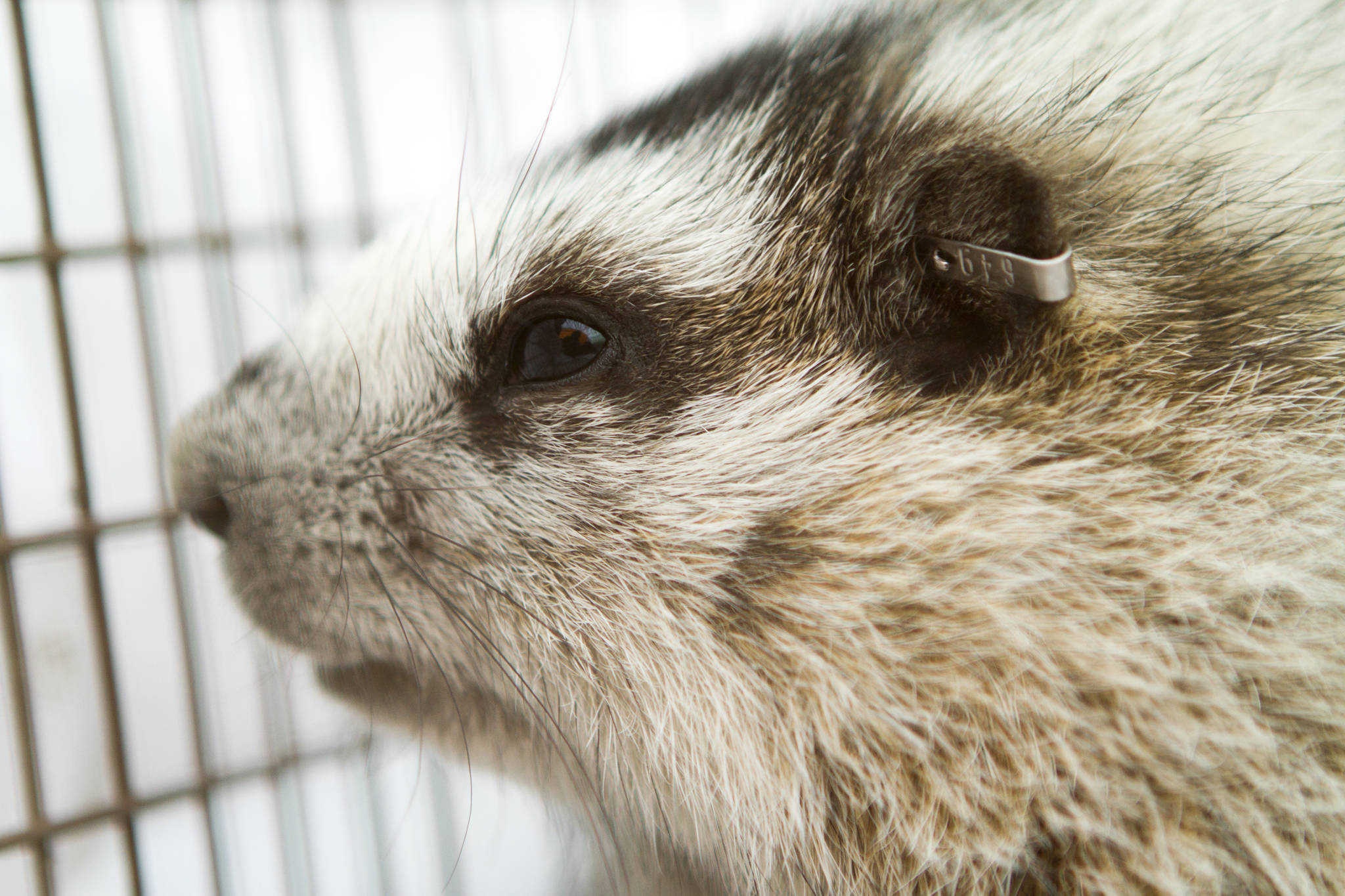Correction: An earlier version of this article stated that Wildlife Wednesdays are weekly events. They are monthly events during the winter. This article has been updated to reflect the change.
The hoary marmot’s call sounds like an alarm. It’s a piercing high-pitched squeal so loud, researchers wear earplugs when studying them in the field, said marmot researcher Link Olson at a Wednesday lecture.
While the large rodent’s whistle warns of eagles, bears and coyotes, its changing use of habitat warns of a human-caused threat: climate change.
University of Alaska wildlife biologist Dr. Link Olson, visiting Juneau for a talk at the Alaska Wildlife Alliance’s monthly Wildlife Wednesdays lecture, said the outgoing mammal’s response to climate change speaks volumes. Though it’s an oversimplification to say the animals’ behavior is a harbinger of climate change, how they respond to warming global temperatures will shed light on what’s to come for alpine animals.
Marmot habitat is changing, Olson said, as temperatures warm worldwide. Tree and shrub lines — the high points in elevation for both trees and shrubs — are moving higher and higher, complicating the alpine-bound animal’s relationship to its surroundings.
“What we know is happening as a result of an increase in temperatures, both on very gradual and more rapid, recent timescales, is that both of these are moving upward,” Olson said. “It’s happening at different rates in different part of the globe, but it is definitely happening on every continent except Antarctica.”
Those rising treelines are reducing the hoary marmot’s preferred home, rocky and treeless slopes where it can most easily find shelter. (Unlike their prairie dog relatives, marmots are poor diggers and rely more on natural shelters, Olson said).
Climate change has a “double-edged sword” effect on hoary marmot habitat: It reduces the square footage of the hoary marmot’s home and isolates individual marmot habitats from one another. As treelines climb, they fill in pathways between alpine slopes, limiting travel between areas marmots neighborhoods, so to speak.
Researchers have dubbed these disconnected mountaintop sanctuaries “sky islands.” Sky islands allow Olson and his colleagues the opportunity to study what happens to isolated marmot populations in real time.
“It’s a really ripe area of study all over the world,” Olson said, adding, “this is not something we’re modeling or predicting, this is something that’s happening.”
The Northern Hemisphere is home to about 15 species of marmot, depending on how they’re categorized, Olson said. At some point during their evolution, those species separated, some by geography — like sky islands — others by genetic mutation or other evolutionary mechanisms.
By studying how marmots respond to the creation of sky islands, Olson and other researchers can gain insight into how climate change might affect marmots. By extension, their research may gain insight into how other animals will respond.
Broadly speaking, animals only have only three options when facing a change in habitat.
“You can move, you can adapt, or you can die,” Olson said.
Think of it this way. Hoary marmots can move to a new habitat, like moving from a good neighborhood in the alpine, to a less welcoming neighborhood, like the forest or seashore.
Marmots can also move to the same habitat in a different place, like finding a similar home in a distant neighborhood. They can adapt, but adaptation typically takes more time than marmots have.
That leaves another alternative. They can die, on a local or species-wide level.
What Olson is interested in answering, is are alpine species like the hoary marmot going to be able to move habitats?
“Are alpine organisms going to be able to move between habitat patches, or possible colonize completely new and different habitats? Whether they are adapting or whether they may go locally or range-wide extinct,” Olson said.
Olson said hoary marmots are not in any immediate danger of extinction. They’re resilient animals that exist on a wide swath of North America and can tolerate different habitats.
Other marmot species may not be so lucky. Vancouver Island marmots may go extinct soon — they’re the most endangered mammal species in Canada. According to the Marmot Recovery Foundation, there were 200 Vancouver Island marmots in 2016. That’s up from a 2013 count of only 30.
Olson thinks the hoary marmot might have a habitat advantage over other marmot species. In coastal Alaska, the hoary marmot’s favored alpine habitat exists in close proximity to rocky shorelines, which mimic the boulder-strewn talus slopes marmots favor for shelter.
It’s not all that surprising in Alaska to find marmots near sea level, an unlikely location, according to previous literature, Olson said.
“One of the reasons I think they’re probably living at sea level is we do have these talus-like environments at lower elevations,” Olson said, “but I don’t think that’s enough.”
Much is left to be studied on how hoary marmots and other alpine denizens will respond to shrinking habitats, Olson said, and what’s needed next are extensive baseline studies to use to compare to future studies of marmot range.
“We know alpine habitats are shrinking, and there are scattered accounts (some in the peer-reviewed literature but mostly anecdotal) of the lower elevational limits of alpine marmots shifting upslope over the past century, but this hasn’t been studied in hoary marmots,” Olson said.
• Contact reporter Kevin Gullufsen at kgullufsen@juneauempire.com and 523-2228. Follow him on Twitter at @KevinGullufsen.

